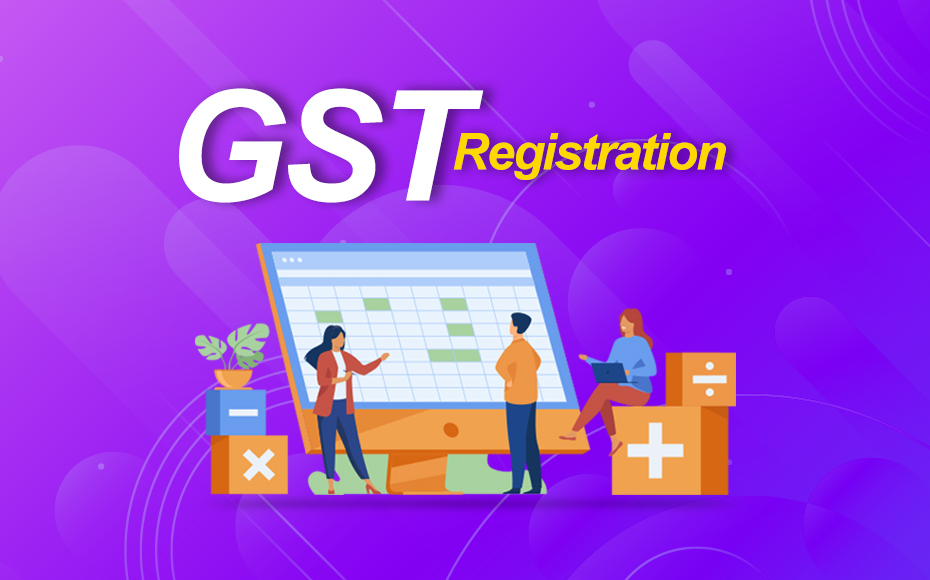The Ultimate Guide to Streamlining the GST Registration Process and Demands for Small Company Owners

Comprehending GST Fundamentals
To comprehend the fundamentals of the Goods and Provider Tax (GST) system, local business owners have to first recognize its underlying implications and concepts. GST is a value-added tax obligation levied on most items and services for residential usage. It intends to simplify the taxation procedure by replacing multiple indirect tax obligations enforced by the state and main federal governments. Under the GST program, services are needed to sign up and accumulate tax on behalf of the federal government, ensuring transparency and compliance.
Among the key concepts of GST is input tax debt, which allows services to claim credit report for taxes paid on their purchases. This device avoids the plunging effect of tax obligations and advertises efficiency in the tax system. In addition, GST is a destination-based tax, indicating that the tax obligation is levied at the point of intake rather than the factor of origin. This ensures fair distribution of tax revenue among states based on where the goods or services are consumed. Comprehending these standard principles is critical for local business owners to browse the complexities of the GST system and ensure compliance with the regulation.
Eligibility Standards for Enrollment
Having developed a fundamental understanding of GST concepts, local business owners must currently meet certain qualification requirements to continue with the enrollment procedure. In India, entities took part in the supply of items or services with an annual accumulation turnover surpassing Rs. 40 lakhs (Rs. 10 lakhs for unique classification states) are required to register for GST. Furthermore, specific businesses such as those included in inter-state supply of products, laid-back taxed persons, and those needed to pay tax under the reverse charge device need to sign up for GST irrespective of their turn over. Organizations that were signed up under the previous tax obligation program (VAT, solution tax, etc) are additionally mandated to register under GST. However, farming services that only supply create out of main production are excluded from GST enrollment. It is essential for local business owner to meticulously assess their qualification based upon these criteria to ensure conformity with the law and stay clear of any type of charges for non-compliance.
Documents Required for GST Enrollment

Simplified Registration Process Steps
Adhering to the collection and verification of the requisite records, the registration process for GST can be navigated via a collection of streamlined steps created to help with reliable conformity for local business proprietors. The very first step includes seeing the GST website and picking the 'New Enrollment' choice. Consequently, the candidate needs to complete Part A of the GST REG-01 type with information such as PAN, mobile number, and e-mail address to acquire an OTP for confirmation. When the OTP is gotten and entered, a Short-term Reference Number (TRN) is produced for more procedures. The next step needs completing Component B of the form with essential service information, submitting supporting records, and completing the confirmation procedure using DSC or EVC. Upon effective confirmation, an Application Recommendation Number (ARN) is issued, suggesting the conclusion of the GST registration procedure. By adhering to these streamlined actions, local business proprietors can efficiently sign up for GST and guarantee conformity with tax laws.
Tips for Ensuring Compliance
To maintain governing adherence and functional integrity, persistent oversight and positive measures are essential in guaranteeing conformity with GST requirements for tiny company owners. Tiny service owners need to stay updated with GST guidelines, submitting due dates, and any adjustments in tax obligation rates to stay clear of charges and maintain a great standing with tax obligation authorities. Going to GST awareness workshops or training programs can boost understanding and conformity with GST guidelines, ultimately profiting the service in the long run.
Verdict
Finally, small company owners need to comprehend the essentials of GST, satisfy the eligibility criteria, gather required papers, and follow the simplified enrollment procedure actions to make sure compliance. By simplifying the GST registration procedure and demands, tiny service proprietors can avoid charges and operate their services efficiently within the legal framework - Singapore GST Registration. It is vital for small service proprietors to stay compliant and educated with GST regulations to preserve a successful organization procedure
Little service proprietors seeking GST registration must guarantee they collect and send the needed records to complete the look at here now enrollment procedure effectively. The files required for GST enrollment commonly consist of evidence of service registration or unification, FRYING PAN (Irreversible Account Number) card of the service identity, address and entity evidence of the promoters/partners/directors, photos, address evidence of the location of organization, bank account statements or canceled cheques, and permission types. Participating in GST recognition workshops or training programs can boost understanding and conformity with GST regulations, ultimately benefiting the company in the long run.
By simplifying the GST enrollment procedure and requirements, tiny service owners can avoid penalties and operate their businesses smoothly her latest blog within the lawful structure. It is important for little business proprietors to remain enlightened and compliant with GST regulations to keep an effective company operation.